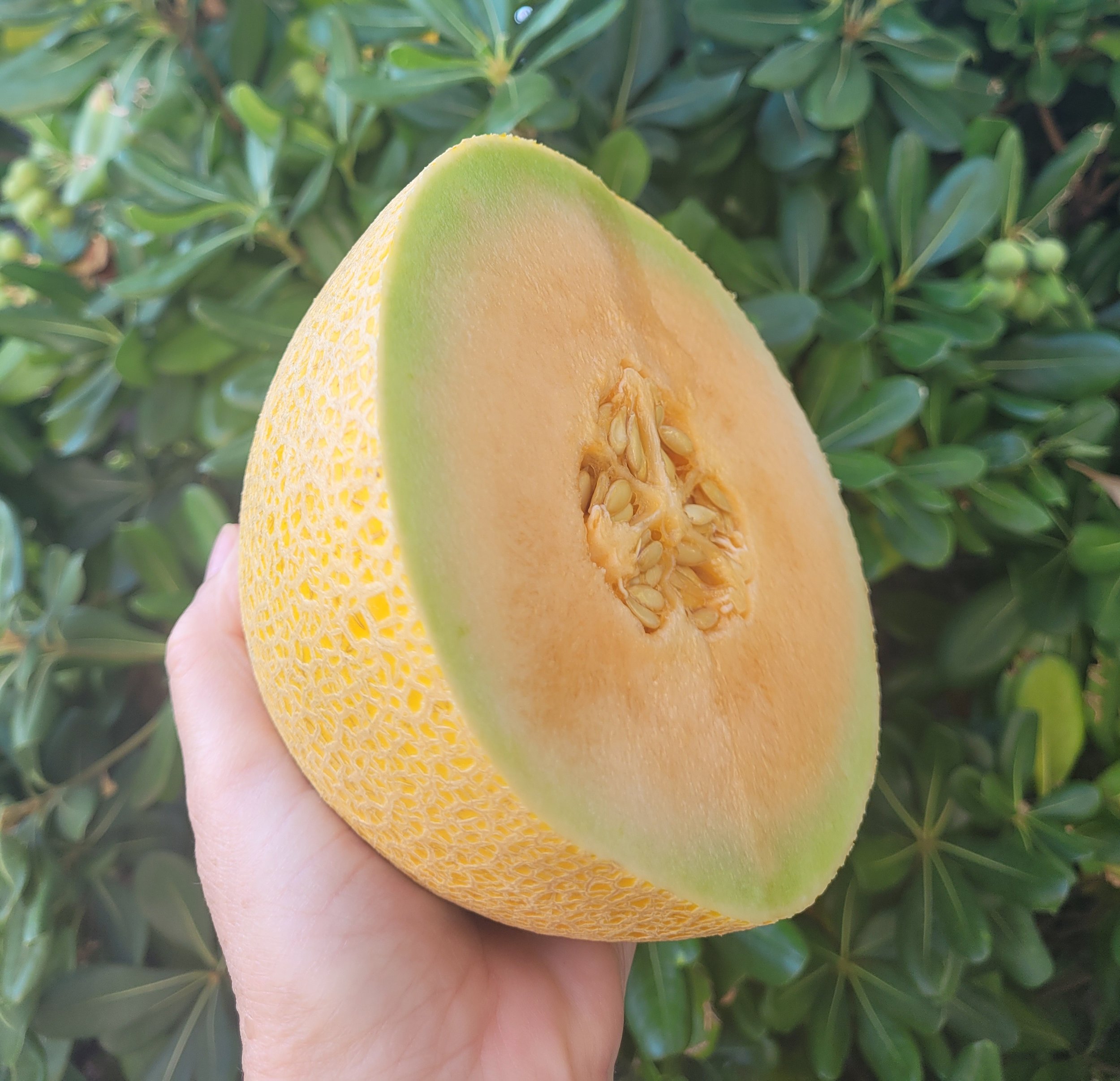HOW TO TELL IF A MELON IS RIPE
California melons are at the peak of flavor! California melon season begins around Memorial Day in El Centro at the southern end of the Imperial Valley in the desert. As the weather continues to get warmer, melon production moves north to the southern end of the San Joaquin Valley to Bakersfield and Coalinga. By July melons are coming out of the northern end of the San Joaquin Valley in Firebaugh and Los Banos and by mid-July melons will move up through the San Joaquin Valley into Yolo County near Sacramento.
Picking a ripe melon is very difficult and is not an exact science. Melons ripen on the vine and do not get any sweeter once picked although texture and flavor can improve. Netted varieties such as muskmelons, Galia and Charentais will “slip” off the vine when ripe. There will be a slight cracking in the area around the stem and the melons will separate from the vine naturally. The skin under the netting will slightly change to yellow. Other melons with hard smooth skin such as the Honeydew melon will change color and have a waxy feel when ripe.
Cantaloupe has a netted exterior with deep orange flesh and high sugar content
There are no hard and fast rules but you can use these suggestions as guidelines when shopping. Melons covered in netting such as a Cantaloupe, Galia, or Haogen will be very fragrant when ripe. Make sure to smell the stem end before buying. You can check the ripeness of most melons by gently pressing on the blossom end of the melon, the end opposite of the stem. A melon should be ready to eat when it gently yields to pressure. If your finger breaks the skin of the melon it is over ripe and past its time to eat. As mentioned above melons with hard smooth skins are harder to tell when ripe. The Honeydew melon for example will become waxy and almost sticky when ripe. Your best bet is to cut them open and taste them.
Watermelons are too thick to do the press test. One way to try and determine the ripeness of a watermelon is to thump on the rind with your knuckles and listen for a dull thunking sound. The juiciest melons will be heavy for their size. Picking watermelons in a field by ripeness is an art and not a science.
Melons that have been well tended to will have a small area called a couche that has been flattened and is discolored from sitting on the ground. If the couche is too prominent or large it means the melons were not turned over or propped up during the growing season. The best way to tell if they are ripe is to cut one open and taste it. Download Earl’s Summer Melon Guide.

